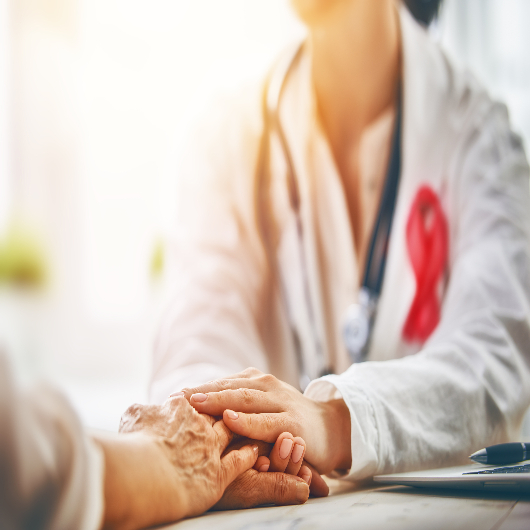What to Do When You Find a Breast Lump

January 10, 2023
Early detection is key to fighting all cancers but especially effective in fighting breast cancer. Early diagnosis allows for more treatment options, and the best chance for treatment to be successful.
There are numerous screening and early detection methods for breast cancer. But what do you do if you find a lump?
Step One: Don’t Panic
It is natural for our minds to go to the worst-case scenario. However, according to the American Cancer Society, most lumps aren’t cancerous, particularly in younger women.
“There is a lengthy list of non-cancerous breast conditions that may cause lumps or other symptoms that are associated with breast cancer,” says breast surgical oncologist, Yolanda Tammaro, M.D. “It is common that changes in the breast tissue occur with menstrual cycles, menopause and pregnancy.”
Breast tissue is naturally bumpy, but lumps that feel harder or different from the rest of your breast could be a sign of cancer.
Step Two: See Your Doctor
Despite lumps often being benign, schedule an appointment with your doctor to get checked. Don’t wait, hoping it will go away on its own.
Your healthcare provider will ask about symptoms and your family medical history. They will then perform a physical exam of your breasts, lymph nodes, armpit and skin of the breast area. If they find a lump or see other signs, they may order more tests.
Step Three: Further Testing
Your doctor may request imagining in order to help determine if the lump is benign. “While this can be scary scary, it will help give a definite cause for the lump and ease your mind,” says Dr. Tammaro.
Imaging may include a mammogram, ultrasound or MRI. You may need more than one imaging test. “This doesn’t necessarily mean the worst,” says Dr. Tammaro. “If the breast tissue is very dense, a mammogram may not be clear enough to make a determination.”
Step Four: The Results
Even if the lump is deemed benign, your doctor may schedule a follow-up appointment for monitoring. “It is important to note that if you find another lump or experience any other symptoms such as nipple discharge, don’t ignore these changes. Talk to your doctor right away,” says Dr. Tammaro.
If the imagining indicates a suspicion of cancer, a breast biopsy may be performed. This is where a sample of breast tissue is removed and examined by a pathologist to provide a diagnosis. A biopsy result will either lead to a follow-up with your doctor if it’s benign or a cancer treatment plan if it’s cancerous.
“Finding a lump is scary, and while you can take comfort that there is a good chance it’s not cancer, you need to get it checked,” says Dr. Tammaro. “Even if it is cancer, the sooner it’s diagnosed the better.”
Next Steps & Resources:
- Meet our source: Yolanda Tammaro, M.D.
- To make an appointment with a breast specialist near you, call 800-822-8905 or visit our website.
- Schedule a breast screening near you
The material provided through HealthU is intended to be used as general information only and should not replace the advice of your physician. Always consult your physician for individual care.






